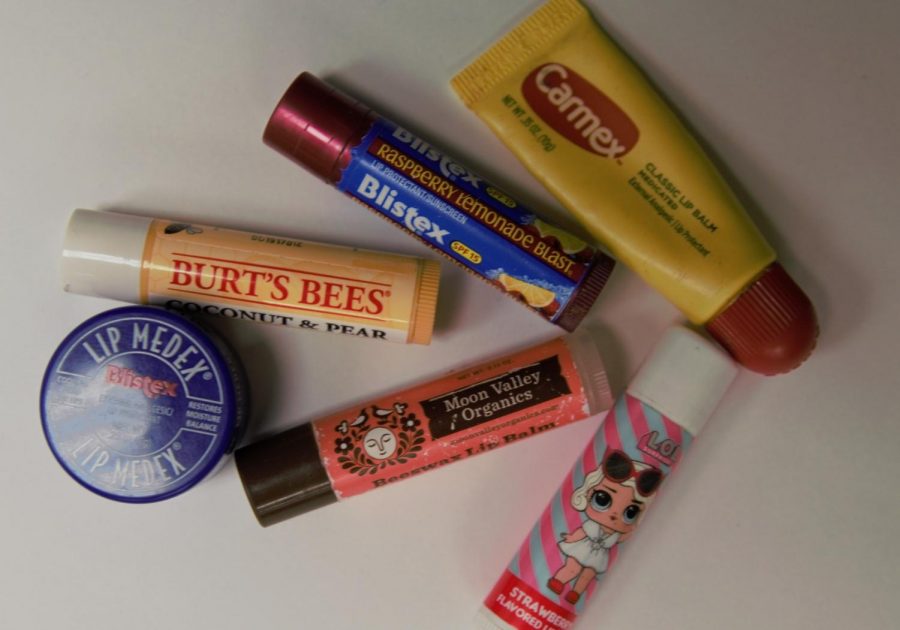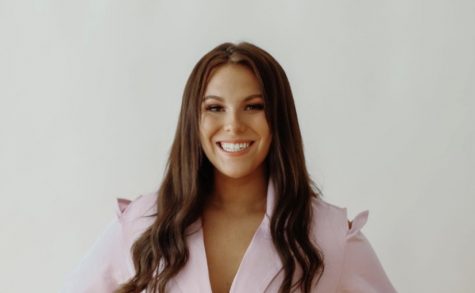The danger of chapsticks
Chapstick is an essential part of the lives of many high schoolers.
October 18, 2019
As we head into winter, almost all of us start resorting to using some kind of chapstick to cure our dry lips. But are our lips getting any better? It’s time to start questioning why they aren’t healing like brands say they should be.
I have always used Carmex lip balm. It started when my dad handed it down to me, and then I created my own personal obsession. When using chapstick, I have always felt as if it was an instant fix that never lasted, especially in the colder months. Through my research, I found I that the hidden ingredients in some of the most name brand chapsticks, including Carmex, dry out lips and can cause other health problems.
In an article from Verily, Elizabeth Rich discusses the different components in chapsticks and lip balm. According to Rich, ingredients that will help moisturize lips are shea butter, honey, cocoa butter, zinc oxide and natural oils. Shea butter is full of fatty acids that nourish lips while calming irritation. It is also infamous for its healing ability when it comes to wounds. Raw honey contains minerals, vitamins and amino acids which all help hydrate your lips. Cocoa butter includes vitamins A1, B1, C, D, E and magnesium. These factors all fight off dryness and will give you the soft lips you’ve been dreaming of. Zinc oxide is essentially a safe and clean sunscreen option for lips. Natural oils are easily absorbed by the skin and have some of the same hydrating amino acids as shea butter.All of these ingredients are examples of what should be in chapsticks that have the goal of moisturizing lips.
On the contrary, Rich explains the ingredients that will negatively affect lips are humectants, parabens, synthetic colors and dyes, fragrances, flavors and chemical sunscreens. Hyaluronic acid and glycerin are both types of humectants. Dermatologist Leslie Baumen says to Style Caster, “These ingredients pull moisture out of the skin, especially in a dry environment and then the water evaporates away.” If humectants are pared with shea butter or another trusted moisturizing variable they are okay, but alone they will cause dryness.
Parabens like methylparaben or butylparaben are a potential cause for breast cancer. Recently, parabens have been found in breast cancer tumors, and most specialists believe the cause of this is from the consistent use of parabens in beauty products. Avoiding parabens in chapsticks and all other products is imperative.
FD and C Blue 1, Green 3, Yellow 5 and 6 and Red 33 are all examples of harmful synthetic colors and dyes. These synthetic colors and dyes can cause irritation and skin sensitivity due to containing heavy metal salts and coal tar. New studies have also linked these variables to causing cancer. FDA federal laws allow nearly any ingredient under the name of “fragrance.” Companies can include the term fragrance and get away with not having a list of the actual ingredients used.Fragrances and flavors do not immediately mean a product is bad, although they do mean that the potential for a negative chemical is present.
Protecting lips and skin from UV rays is important, but the SPF ingredient name to look for is non-nano zinc oxide for the active ingredient. If the chapstick lists oxybenzone as an SPF substance, the risk of endocrine disruptors becomes more present.
An article written by Sarah Nowicki in Betches includes a list of the best clean moisturizing chapsticks and the worst chapsticks for lips.
The Best
- Tatcha Camellia Gold Spun Lip Balm
- Aquaphor Lip Repair Healing Ointment
- Smith’s Rosebud Salve
- Jack Black Intense Therapy Lip Balm
- Fresh Sugar Lip Hydrating Balm
- Vaseline
The Worst
- Carmex
- Chapstick
- EOS Lip Balm
A perfect example of a misleading lip balm would be EOS. EOS Lip Balm has been promoted by celebrities, media and popular use, but what many may not know is the ongoing legal case against EOS. In an article from Huffington post written by Chloe Fox, Fox investigates the new lawsuit against EOS. Consumers have been experiencing reactions such as rashes, dryness, bleeding, blistering, cracking and loss of pigmentation. Some consumers are luckier than others and only have these symptoms for a couple of weeks; for others, these symptoms could become permanent. Vitamin E is present in EOS which is the supposed cause for most of these symptoms. The goal of the lawsuit is to require EOS to put a warning label on their packaging.
The main question that has been swirling around head is, “why are companies allowing harm to their consumers?” I came up with two theories. My first theory is cost. Although there isn’t a public price range for these products, one can assume that money more than often is the goal. Every company functions under some form of cost benefit analysis. If the cost to the company is consumers occasionally having problems over having a cheaper production price; most companies would take this route. Secondly, the conspiracy of “the dryer the better” comes into play. If consumer’s lips stay dry, the need for chapstick increases. If there is a larger demand for a company’s product they inevitably get more profit. Everything comes back to greed, it is the most logical explanation as to why a company would put consumers at risk.
As we proceed into the dry, cold and unbearable season of winter, it is important to pay attention to what’s in your chapstick. Luckily, we all as individuals have control over what goes on our lips and can deny the lack of corporate ethics in chapstick brands.










sheshe • Dec 9, 2019 at 4:01 pm
thank you for sharing! I have always wondered why Vasaline was the only thing that would relive my lips. I was wondering if you have any articles about nail polish?